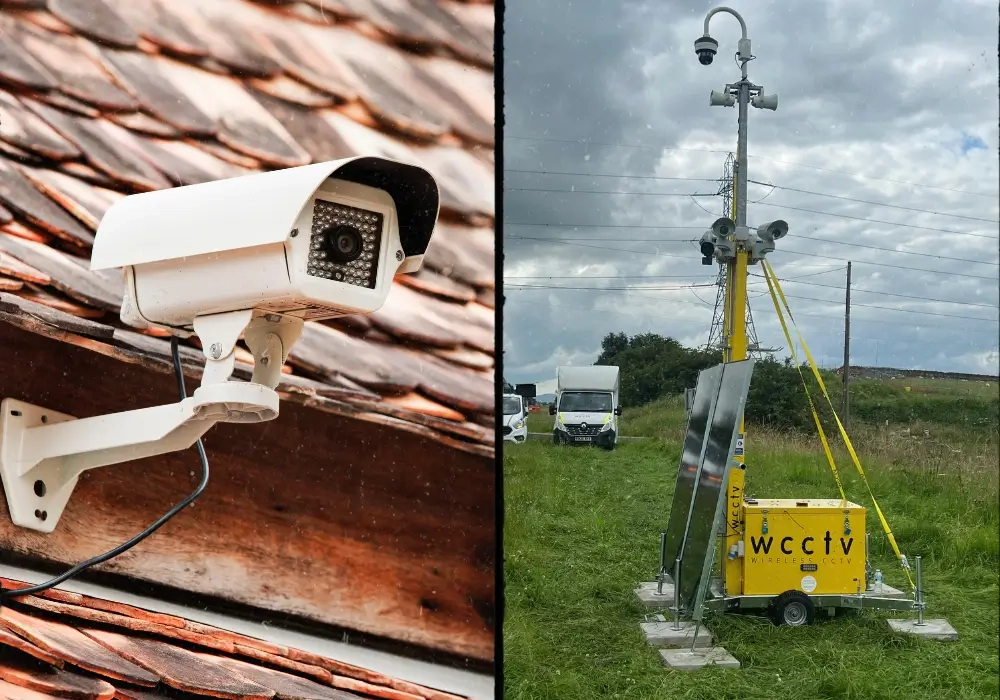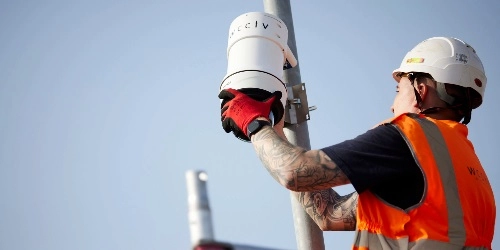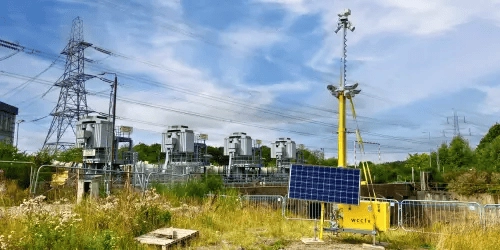CCTV has become so ubiquitous in modern UK life that we barely notice it anymore.
In London alone, there are nearly 400 cameras per square kilometre, monitoring everything from public spaces to shops, the tube and private offices.
But surveillance has moved way beyond static cameras. Today's systems are mobile, smart and more powerful than ever.
This article traces the history of surveillance technology, from its earliest fixed systems to today’s cutting-edge mobile CCTV Towers.
As surveillance tech continues to advance, WCCTV is proud to be at the forefront. We're amazed by how far this technology has come, so let's share the history behind it.
What Were the Early Days of Surveillance Like?
The foundational period of surveillance practices began in the late 19th century, focusing primarily on government and military use, where the technology served specific strategic purposes rather than general security monitoring.
This involved physically tapping into telegraph lines to eavesdrop on messages, a process requiring significant manual effort and limited to wired communication networks. This was a key strategy applied during the First World War.
At the start of the 20th century, early experiments with new forms of visual surveillance emerged:
- 1927: The very first rudimentary CCTV system can be attributed to Leon Theremin, a Russian inventor who, after demonstrating his invention to the government, had it installed in the courtyard of the Kremlin, Moscow.
- 1940s: Walter Bruch, a German electrical engineer, developed a CCTV system during World War II. It was used to observe V-2 rocket launches from a safe distance.
- 1949: Vericon was the world's first commercial CCTV system launched in the US and required no government permit for installation. It consisted of wired connections between black and white cameras and monitors.
- 1960: CCTV arrived in Trafalgar Square, London. The Metropolitan Police installed two temporary cameras to oversee crowds during the Thai royal family's state visit and Guy Fawkes Day celebrations. This significant milestone marked the first example of public CCTV usage in the UK.
- 1968: The first deployment of CCTV by law enforcement in Olean, New York. Police installed cameras along the main street to monitor and prevent crime. This is the earliest known use of CCTV for public surveillance in the US.
These early systems, though limited by basic technology and manual operation, laid the foundation for modern surveillance practices.
How Did Fixed Cameras Evolve Through the Decades?
From the 1970s onwards, the advent of video recording resulted in surveillance techniques becoming rapidly more sophisticated.
The Analogue Era: 1970s - 1990s
"During the 1970s, what was once the exclusive domain of governments—closed-circuit television—began to be widely adopted by banks and other financial institutions as a critical security measure against theft." The Flying Locksmiths
The arrival of the VCR
A huge turning point for CCTV in the 70s was the introduction of video cassette recorders (VCRs).
Before VCRs, CCTV still relied heavily on live viewing and control; now, systems could run unattended because the media was recorded. This development marked a significant shift in how surveillance systems operated.
At this point, analogue cameras also evolved into colour and enabled higher resolutions. The introduction of microchips had a big impact, offering better imagery, reducing the camera's physical size and extending recording duration.
However, videotapes presented notable limitations. Storage capacity was minimal, requiring frequent tape changes, and the physical tapes consumed considerable storage space. On top of that, tape quality degraded over time, potentially compromising evidence or security footage.
Multiplexers improve efficiency
During the 90s, digital multiplexers were an important advancement in making surveillance cheaper and more efficient.
These devices introduced time-lapse recording and motion-activated recording features, conserving storage space by capturing footage only when necessary. They also offered automatic and manual camera switching capabilities, allowing operators to monitor multiple locations from centralised control rooms.
The Digital Revolution: Early 2000s - Present Day
The transition from analogue to digital technology marked a fundamental shift in how surveillance systems operated and stored information. Digital video recorders (DVRs) replaced videotapes, offering improved storage capacity, faster access times, and significantly better image quality.
The importance of the Internet
The creation of the Internet was pivotal in the advancement of wireless surveillance.
It allowed early-stage internet-connected CCTV systems. Using Ethernet or infrared radio frequency, security teams could install point-to-point links to build surveillance networks.
The digital shift
Throughout the 2000s, the technology evolved rapidly, expanding from primarily government surveillance into residential and commercial use:
- Internet protocol (IP) cameras replaced their digital counterparts, allowing data to be transmitted across computer networks. This paved the way for proper remote viewing and control.
- Recording also moved to the internet via network video recorders (NVRs), while storage gradually shifted to the cloud.
- Wireless connectivity improved through better compression and transmission methods, reducing the need for extensive cabling. This made it possible to install cameras in challenging locations, such as large outdoor areas or historic buildings, where wiring was impractical.
- Home security became accessible and affordable, with devices like wireless doorbell cameras offering real-time alerts to smartphones.
This expansion brought surveillance from protecting the nation into monitoring everyday private life aspects.
Now, state security can take place just about anywhere and, equally, be tracked from anywhere, protecting society on an unprecedented level.
These advances laid the groundwork for remote CCTV monitoring, which has become one of our core services.
What Driving Factors Led to the Rise of Mobile Surveillance?
When fixed surveillance systems couldn't keep up, mobile solutions emerged to provide the adaptability that today's security demands require.
The need for flexibility and rapid deployment
Fixed cameras are difficult to move, making them unsuitable for temporary or changing settings like events or construction sites. Mobile CCTV Towers, on the other hand, can be set up and relocated quickly and easily.
Enhanced situational awareness in dynamic environments
Static cameras have a limited field of view, resulting in blind spots where activity cannot be captured.
In contrast, mobile systems provide broader coverage that enables adaptable observation of large, sprawling areas and even remote locations, without any blind spots.
Cost-effectiveness and sustainability
Static systems are time-consuming and costly to implement, making them unsuitable for short-term needs. Mobile towers are a cost-effective alternative and can be deployed within hours.
Additionally, sustainable power sources such as solar or battery banks allow for autonomous operation, regardless of where a mobile tower is located.
We take sustainable power seriously, which is why our temporary CCTV solutions come ready-equipped with solar or fuel cell technology.
How Do Fixed and Mobile Surveillance Systems Compare?
Fixed and mobile surveillance serve different purposes, each suited to specific scenarios. Here's a quick comparison:
|
Criteria |
Fixed Surveillance Systems |
Mobile Surveillance Systems |
| Deployment time | Long setup process and disruptive to the environment | Rapid deployment, often within hours, with minimal disruption |
| Flexibility/portability | Static and permanently installed | Easily relocated and highly adaptable to changing needs |
| Coverage | Limited to each installation point | Dynamic and adjustable, ideal for temporary and shifting focus areas |
| Power & Connectivity | Relies on mains connectivity and wired networks | Autonomous power like solar and battery; relies on mobile networks like 4G and 5G |
| Cost-effectiveness | High upfront cost, not ideal for short-term use | Lower cost, ideal for short-term or rotating needs with managed service options available |
| Target Applications | Suited for permanent security and continuous long-term monitoring | Best for mobile, dynamic, and short-term applications like events, vacant properties, public safety initiatives, critical infrastructure, etc. |
WCCTV specialises in mobile surveillance, offering products like CCTV Towers and Redeployable CCTV systems designed for flexible, dynamic environments.
What Role Does Advanced Technology Play in Modern Mobile Surveillance?
There's no doubt that emerging tech will continue to play a key role in advancing surveillance techniques.
Connectivity and remote access
Mobile networks, including 4G and 5G, provide reliable connectivity that enables surveillance deployment in even the most remote locations that lack existing infrastructure. These networks support both live video streaming and recorded footage transmission.
This immediate access to visual information proves invaluable for preventing crimes and coordinating emergency responses.
Our cameras deliver live and recorded video via mobile networks and are specifically designed for temporary security or targeted surveillance applications.
Future of surveillance – beyond cameras
Surveillance technology is advancing rapidly, incorporating AI and machine learning to provide real-time analytics, such as behavioural pattern recognition, facial identification and automated object detection.
Wearable technology, like smart helmets, protective vests and monitoring watches equipped with chemical and thermal sensors, provides environmental hazard detection while continuously tracking vital signs of personnel in dangerous situations.
GPS tracking strengthens site security by preventing unauthorised access and maintaining constant awareness of worker locations across large or complex sites.
It has taken many decades to get from basic fixed cameras to intelligent, rapidly deployable mobile solutions. But it's easy to see how cost-effective, rapidly deployable options are necessary in today's fast-changing security environment.
For more information on protecting your assets with advanced, flexible surveillance, talk to WCCTV today. We can help you protect what matters most by delivering security precisely where and for however long you need it.
Why Choose a Specialist for Mobile Surveillance?
At WCCTV, we use state-of-the-art equipment to deliver security when and where it's required.
Our mobile CCTV systems are deployed rapidly and offer comprehensive protection without the high costs.
Our fully-managed service includes everything required for effective security, including:
- Installation
- Video monitoring through our advanced system Stellifii
- Software integration with industry standard VMS platforms
- Connectivity packages
- Alarm monitoring
- Ongoing technical support and training
"Every product can be backed by a managed service that includes installation, video monitoring, connectivity packages, alarm monitoring, ongoing technical support and training for the lifetime of the product."
Our product range features everything from Body Cameras to CCTV Towers and Redeployable CCTV units that are perfect for environments with shifting priorities, offering 24/7 surveillance and immediate response.
Our equipment delivers live and recorded images via secure mobile transmission and maintains power through sustainable and reliable power sources.
WCCTV has proved time and time again to be the perfect solution for construction sites, critical infrastructure, vacant properties and for use within the public sector.
You don't need to manage security alone. You just need a better partner.




